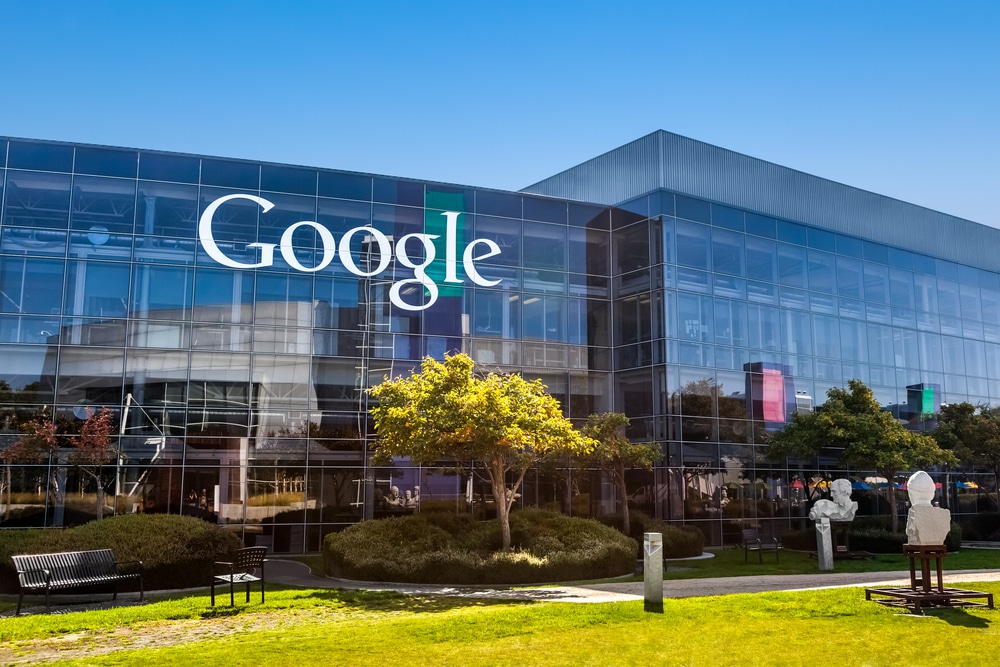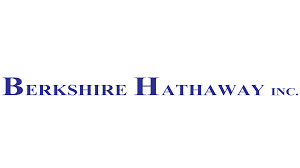
A recent study uncovered the top 5 most profitable companies in the world. These industry giants flaunt their financial strength, with Saudi Aramco leading the list, boasting an impressive profit of $247.43 billion in 2023.
Despite their ongoing triumphs, people are curious: What’s the secret behind their success?
How do organizations create so much revenue? This article will break down the top five most profitable companies and the strategies these companies use to maximize profits.
Ranking the Most Profitable Companies
1) Saudi Aramco – $247.43 Billion

In 2023, Saudi Aramco, the Saudi Arabian oil giant, raked in the highest net revenue globally, scoring profits of over 247 billion U.S. dollars.
Led by its current CEO Amin H. Nasser, this company, which started in 1933, thrives in the oil and gas industry. With the third-highest market cap worldwide and being the backbone of Saudi Arabia’s economy, Saudi Aramco’s massive oil reserves and strategic Middle East location keep it at the forefront of the global market.
It’s important to note that Saudi Aramco is not the most valuable company in the world, rather it’s the most profitable.
The difference between the most profitable companies and valuable companies is that profit is simply revenue minus expenses, while value takes stock, future earnings, market share, and many other things into consideration.
Another way of looking at “value” is if the company would be put up for sale, how much would it cost to buy it. In that case the potential buyer would look at all of the things involved in the company, especially future earnings and potential.
According to this, Microsoft would be the most valuable company in the world (with a value of 3.9 trillion USD as of March, 2024), but for this article we are only talking about profit – simply which company took home the most money in 2023.
How Saudi Aramco Maximizes Profitability
Saudi Aramco has a complicated history of public, private, and government run stakes in the company, but they made its financials public in 2019 for the first time as part of a $10 billion bond sale. In fiscal 2020, Aramco faced challenges due to the COVID-19 pandemic, resulting in a drop in net income to $49 billion from $88 billion in 2019.
Fluctuating demand and energy prices impacted its performance, though there was a slight improvement in the second half of the year. In the same year, Aramco acquired a 70% stake in Saudi Basic Industries Corporation for $69.1 billion (a big reason why they had the bond sale), further solidifying its position in the market.
Currently, this Saudi oil giant is ramping up its big data and artificial intelligence unit to enhance profitability by making informed decisions in areas like trading and acquisitions.
The focus is on optimizing investments to better align with Aramco’s extensive operations and to adapt swiftly to market dynamics including conducting asset-specific reviews to increase returns. Aramco is also actively pursuing various deals such as acquiring a stake in Gas & Oil Pakistan and refineries in Asia, while also exploring opportunities like investing in Shandong Yulong Petrochemical in China.
Utilizing advanced commercial models like the Global Optimizer, Aramco anticipates an additional $1.5-$2 per barrel in earnings before interest and taxes compared to traditional methods.
Summary of why Aramco is so profitable
In summary, what makes the most profitable company in the world so succesful is the ability to innovate when necessary. Even in a conservative business environment such as oil and gas, Aramco does an incredible job of finding ways to lower costs, invests in new industries and expansions and adapts itself to challenges.
2. Apple – $114.3 Billion

Under the leadership of its current CEO Tim Cook, Apple creates and produces mobile gadgets, computers, and digital music players. They also offer software, services, accessories, and more. Apple is famous for its iPhones, iPads, and Macs.
Right now, Apple is the world’s 2nd largest company by market value (they were the largest for a while but Microsoft overtook them in January, 2024). They’re known for their revolutionary products, but they are also just as known for pushing tech boundaries. Apple’s focus on innovation and top-notch design has won over consumers, making them a top player in the market.
How Profitable Is Apple?
In the last quarter of 2023, Apple had some really impressive financial results. They pulled in a quarterly revenue of $119.6 billion, which was a nice 2 percent raise from the year before. Earnings per diluted share also went up by 16 percent to $2.18.
Tim Cook said the revenue growth was all thanks to strong iPhone sales and some serious record-breaking moves in Services. He was pretty proud of hitting over 2.2 billion active devices around the globe, showing how much Apple is all about pushing boundaries and keeping customers happy.
Luca Maestri, the CFO of Apple, made sure to talk about how strong the company’s financial stance is. He mentioned a big jump in operating cash flow and how much they’re giving back to shareholders. Apple announced a cash dividend of $0.24 per share of common stock, showing they’ve got faith in what’s coming next.
Apple has kept their profits up and showed they’re putting money into smart long-term growth plans. Apple makes money because it is involved in a bit of everything. They rake in cash from selling iPhones, iPads, and Macs, and offering services like the App Store, Apple Music, and iCloud. This mix helps them play it safe and keep the money flowing in steadily.
Summary of why Apple is so profitable
Nobody does innovation, forward thinking, and marketing as good as Apple. The combination of always thinking ahead and constantly coming out with new and cool products, puts them not only as the second most profitable company in the world, but also as the 2nd most valuable company in the world (they were the most valuable company for many years until 2024). As long as they keep up with innovation it does not look like they will be going away anytime soon.
3. Berkshire Hathaway – $100.3 Billion

Berkshire Hathaway Inc. is a conglomerate with interests in insurance, transportation, energy, services, manufacturing, and retailing, among other sectors. Its diverse investment portfolio includes equity securities and derivatives, which significantly influence its financial performance.
Berkshire was co-founded by current CEO and legendary investor Warren Buffet. He is often used as an example of long term investing, compound interest, and longevity as he started investing in the stock market at age 11 and real estate at age 16. His earnings compounded over time, and he continued to invest in innovation and smart business transactions until the point where he now leads the 3rd most profitable company in the world.
While Berkshire Hathaway is a significant player in various industries, it’s worth noting that one fifth of all of their assets is invested in Apple Inc. When Apple wins so does Berkshire, and it’s also a testament to Buffet’s belief in innovation.
Berkshire’s Rising Revenues and Falling Fortunes
In the third quarter of 2023, Berkshire raked in $93.2 billion in revenue from its core business operations, showing a solid 21.2% bump from last year. But, when you consider the hit of $29.8 billion from investments and derivatives, the revenue dropped to $63.4 billion.
The company’s net loss for shareholders shot up by a whopping 356% to $12.8 billion in Q3 2023, with earnings before taxes (EBT) taking a hit of $17 billion, up 298% from the same period last year. These losses mostly stemmed from investments, especially a big drop in Apple stock, despite strong revenues from other sectors like insurance, railroad, utilities, and energy.
Changes in GAAP back in 2018, which now include unrealized gains and losses from investment portfolios, have led to more earnings ups and downs for Berkshire. Even with these challenges, Apple remains a key investment for the company, underscoring its profitability and significance in Berkshire’s portfolio.
Summary of why Berkshire Hathaway is so profitable
Berkshire Hathaway is very different from the rest of the companies on the list as it is a conglomerate (a number of different companies that are put or grouped together to form a whole but remain distinct entities). Berkshire’s profitability comes from years and years of smart investing, long term goals, and the thing that all of these companies have in common – finding innovation and investing in it.
4. Microsoft – $95.02 Billion

In early 2024, Microsoft surpassed Apple as the most valuable public company, reaching a market valuation of over $3 trillion. As Satya Nadella approaches his 10th anniversary as CEO, Microsoft faces pressure to maintain its position and deliver results.
Investors are particularly interested in Microsoft’s advancements in artificial intelligence (AI). The company has heavily invested in AI, including a significant stake in OpenAI, the creator of the ChatGPT chatbot. Last year, Microsoft focused on integrating AI across its product offerings. While AI implementation was anticipated to start yielding results in 2024, investors have been eager for early indications of its impact on sales.
Profitability Strategy Highlight
Microsoft’s profitability strategy revolves around innovation. In this case by leveraging artificial intelligence at scale across its product ecosystem. By investing in AI technologies and integrating them into its offerings, Microsoft aims to drive revenue growth, enhance operational efficiency, and maintain its competitive edge in the market. The successful implementation of AI solutions, as evidenced by Azure‘s growth and commercial cloud revenue, underscores the effectiveness of this strategy in delivering tangible financial results.
Microsoft’s recent financial report demonstrated promising signs. Revenue for the last quarter of 2023 reached $62 billion, marking an 18% increase from the previous year, with profits rising to $21.9 billion, a 33% increase. Satya Nadella emphasized the shift from discussing AI to its widespread application.
The company forecasts continued growth, expecting sales of $60-61 billion in the current quarter, up 13-15% from the previous year. Despite investments in expanding data centers for cloud computing and AI, Microsoft anticipates higher operating income for the fiscal year.
Microsoft’s commercial cloud offerings, generating $33.7 billion in revenue, saw a 24% increase. Azure, its flagship cloud computing product, experienced a 30% growth, driven in part by its generative AI products developed in partnership with OpenAI.
Nadella highlighted Azure’s continued market share growth, attributing it to Microsoft’s AI advantage. Additionally, commercial subscriptions to Microsoft’s cloud productivity suite, including Teams, Word, and Excel, rose by 17%.
Summary of why Microsoft is so profitable
Microsoft has always been at the top of innovation. Excel was, and still is, one of the most succesful software of all time, and even 40 years later Microsoft continues to improve on old things and add new ones. Their investments in AI, including ChatGPT, proves they are still very much innovators, even if they don’t have the flashy marketing style of their tech competitor Apple.
5. Alphabet (Google) – $78.78 Billion

Alphabet is the big umbrella company over Google and other businesses. Google, known for Search, Ads, Maps, YouTube, and more, is its main gig. They do ads, sell digital things, have cloud services, and even gadgets. Ever heard of Nest or Waymo? That’s Alphabet too.
Guess what? Alphabet just dropped its latest financial report for 2023. They sat at a cool $78.78 billion net revenue by the end of 2023, and were even able to trim expenses on tech gear. Alphabet looks like they are in great shape.
They’re all about AI, new tech, and finding cash beyond ads for long-term success. But they do have their challenges. Dealing with more rules from the government and fierce tech rivals keeps them busy.
Alphabet’s Financial Strength to Dominate the Market
Alphabet Inc. is doing extremely well financially, mainly because of some smart changes they made in how they handle their assets. They’re worth over $1.3 trillion, showing they’re a big deal in the tech world. Most of their money comes from Google, which makes up 99% of their revenue, mostly from online ads. Because they’re so financially strong and basically dominate internet search forums, Alphabet can invest in big plans for the future and handle ups and downs in the economy.
But even though they have a bunch of different things going on, Alphabet still depends a lot on ad money. In 2023, more than 75% of their money came from ads. This means they’re kind of at the mercy of how much companies spend on advertising, which can change based on how the economy’s doing or what companies want to do. Plus, things like getting rid of third-party cookies and people using ad-blocking tools could also hurt their ad business.
Summary of why Alphabet is so profitable
Despite being the newest company in the top 5 (established 1998), Google became the dominant force in internet searches. And when you are the main tool that the whole world uses for their information, there is a lot of money to be made. They too are constantly innovating by always creating better user experiences and investing in new tech such as AI.
Business Strategies to Learn from Top Companies
1. Focus on Diversification and Technological Advancement
Despite being primarily an oil and gas company, Saudi Aramco’s strategy of diversification into big data and artificial intelligence reflects an understanding of evolving market dynamics. By leveraging technology, they aim to optimize operations, make informed decisions, and adapt swiftly to market changes. Additionally, their focus on expanding globally through strategic acquisitions demonstrates a commitment to growth and resilience in the face of fluctuating energy prices.
2. Product Innovation
Apple’s continuous innovation in product development and diversification into services has been pivotal to its profitability. By consistently introducing groundbreaking products like the iPhone and iPad, and expanding into services like the App Store and Apple Music, Apple maintains a strong foothold in the market. Their emphasis on customer satisfaction and loyalty, coupled with a diverse revenue stream, ensures steady profitability even in fluctuating market conditions.
3. Long-term Investment and Portfolio Management
Despite facing challenges in investment performance, Berkshire Hathaway’s long-term investment strategy remains robust. While their investments may experience volatility, their diversified portfolio, including holdings in profitable companies like Apple, provides stability and potential for long-term growth. Moreover, their adherence to rigorous financial analysis and prudent decision-making underscores their commitment to maximizing shareholder value over time.
4. Leverage AI Across the Product Ecosystem
Take a cue from Microsoft and invest in artificial intelligence (AI) technologies to enhance your product offerings. Consider integrating AI software solutions into various aspects of your business operations to drive revenue growth, improve operational efficiency, and stay competitive in the market. Microsoft’s success with AI implementation, particularly in cloud computing and productivity tools, serves as a model for leveraging advanced technologies to achieve business objectives.
5. Diversify Revenue Streams
Alphabet may seem like they are all in on one revenue stream (Google ads) but they are taking different approaches to diversifying revenue streams beyond traditional advertising. While advertising remains a significant source of income for many tech companies, reducing dependency on it can mitigate risks associated with fluctuations in ad spending and regulatory changes. Explore opportunities to expand into new markets, offer additional services, or develop innovative products to generate alternative revenue streams and ensure long-term financial stability.
Final Thoughts
The most profitable companies in the world cover a mix of tech, energy, and finance sectors. In this era of AI, tons of startups dream big to become one of these top players. None of these companies are flawless; they’ve all had their fair share of setbacks along the way, but they all have one thing in common: they never stop evolving.
Recognizing their weaknesses helped them uncover their strengths, driving the constant self-improvement that shaped today’s tech landscape. These companies have a huge impact worldwide, with billions using their products daily.
Companies of all sizes need to innovate in order to succeed. This doesn’t necessarily mean inventing new technologies, but it does mean they need to plan and forecast ahead. FP&A software is a great way to do this as it consolidates all of your data in one place and creates a scenario where finance teams can make accurate and up to date decisions with management.